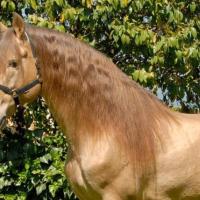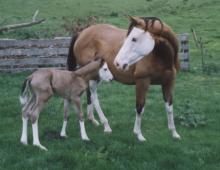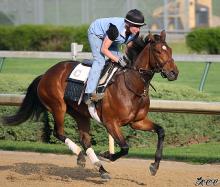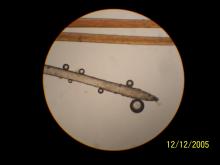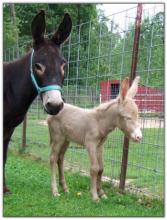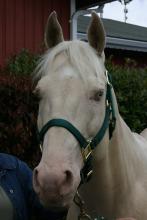Equine
Would you like to know what color your horse is? Do you have questions about the color of your foal? You've come to the right place.
White Patterns in Horses
Horses can have a great variety of white patterns. All of the following white patterns can occur on any color horse, with any combination of dilutions, modifiers, and other white patterns. For example, it is completely possible to have a tobiano/sabino/splash/roan/palomino. However, while it is possible, not all horse breeds carry all white patterns and dilutions, and possible does not equate to a likely outcome. All white patterns can also be present in minimal and maximal forms. Minimal can be very minimal indeed (think white spot on the bottom of a hoof for frame), and maximum expression can be almost completely white, especially when more than one pattern is present.
- Read more about White Patterns in Horses
- 1 comment
- Log in or register to post comments
Horse Color Testing Labs
Color Testing Labs
The following labs provide DNA color testing. This list is not meant to be comprehensive nor meant as an endorsement of any of the labs listed.
- Read more about Horse Color Testing Labs
- 4 comments
- Log in or register to post comments
Horse Color Genetics Pages
Here is a list the horse color genetics pages that can be found on the site. Please choose a page below to get started.
- Read more about Horse Color Genetics Pages
- Log in or register to post comments
Scientific Articles Used as Reference for Horse Color Genetics
Appaloosa Spotting (Leopard Complex or LP)
Differential Gene Expression of TRPM1, the Potential Cause of Congenital Stationary Night Blindness and Coat Spotti
Modifiers in Horses
Modifiers change the appearance of the horse coat color. They are similar to dilutions but have different effects.
- Read more about Modifiers in Horses
- 3 comments
- Log in or register to post comments
Horse Hair Under a Microscope: A descriptive report
There are many variations among horses in hair colour - especially the colours we register.
- Read more about Horse Hair Under a Microscope: A descriptive report
- Log in or register to post comments
Foal Coat Color Calculator
Donkey Color test
Color Dictionary
- Read more about Color Dictionary
- 3 comments
- Log in or register to post comments
Donkey Color Genetics
Donkey color genetics are not yet well understood, but are being researched more as breeding donkeys becomes more popular Also, with donkeys, "points" re
- Read more about Donkey Color Genetics
- Log in or register to post comments
Dilutions In Horses
Dilutions in horses "dilute" the base color of the horse making the horse appear lighter in color. Some, as with homozygous cream, can make the horse appear very nearly white. Some dilutions affect black pigment, other affect red and some affect both red and black pigment. A horse can carry and express more than one dilution and at times it can be difficult to distinguish different dilutions with similar expressions. The dilutions in horses are Cream, Dun, Champagne, Pearl and Silver
- Read more about Dilutions In Horses
- 5 comments
- Log in or register to post comments
